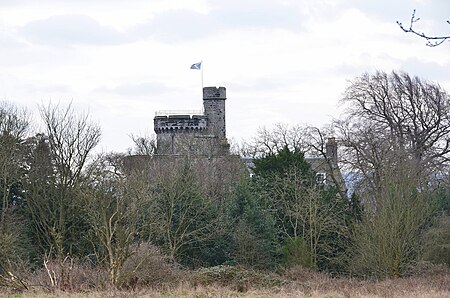Dunimarle Castle
Category A listed buildings in FifeInventory of Gardens and Designed LandscapesListed buildings in CulrossListed castles in ScotlandRuined castles in Fife ... and 1 more
Scotland castle stubs

Dunimarle Castle is located 1 km west of the centre of the village of Culross in Fife, Scotland. The name 'Dunimarle' means 'castle by the sea', although the original name of the estate was 'Castlehill'. The mansion house is a Category A listed building and the ruins of the medieval castle are Category B listed. The grounds are included in the Inventory of Gardens and Designed Landscapes in Scotland.
Excerpt from the Wikipedia article Dunimarle Castle (License: CC BY-SA 3.0, Authors, Images).Dunimarle Castle
Auf dem Zolchberg,
Geographical coordinates (GPS) Address Nearby Places Show on map
Geographical coordinates (GPS)
| Latitude | Longitude |
|---|---|
| N 56.055 ° | E -3.6436111111111 ° |
Address
Glaube-Liebe-Hoffnung Stiftung
Auf dem Zolchberg 1
14774 , Kirchmöser Dorf
Brandenburg, Deutschland
Open on Google Maps











